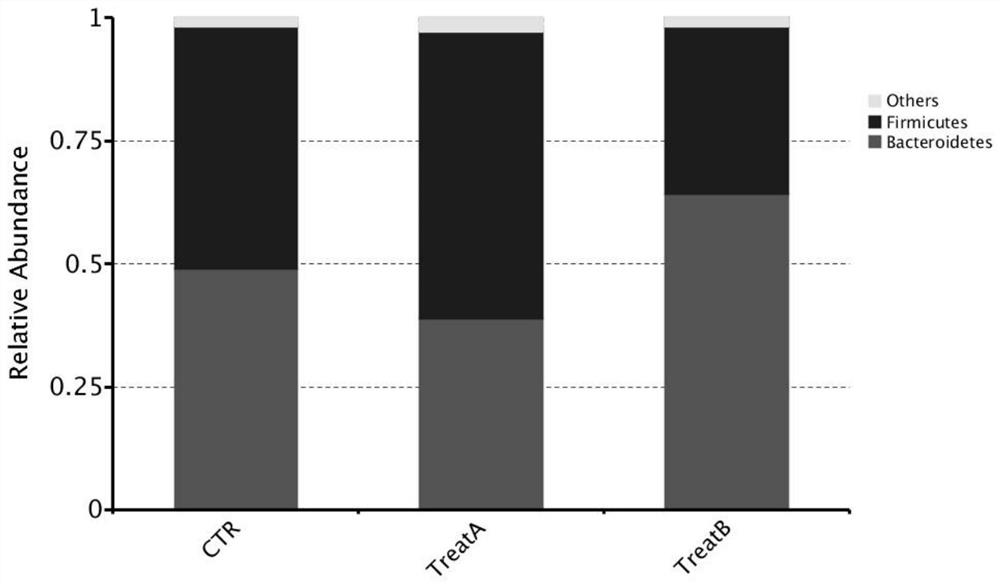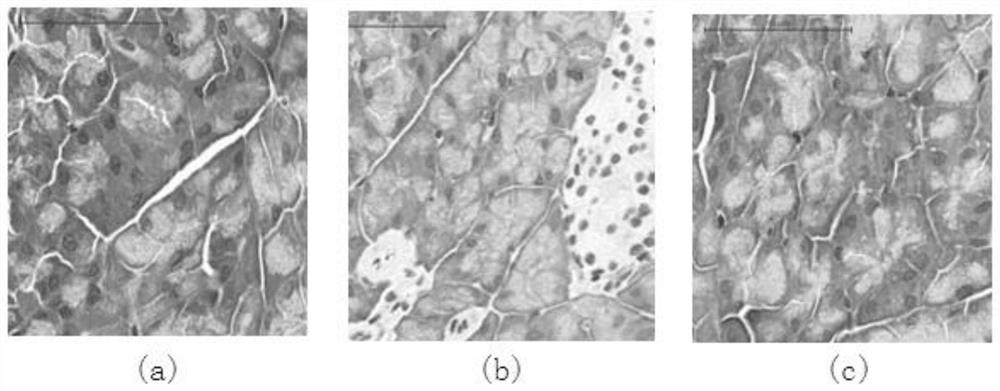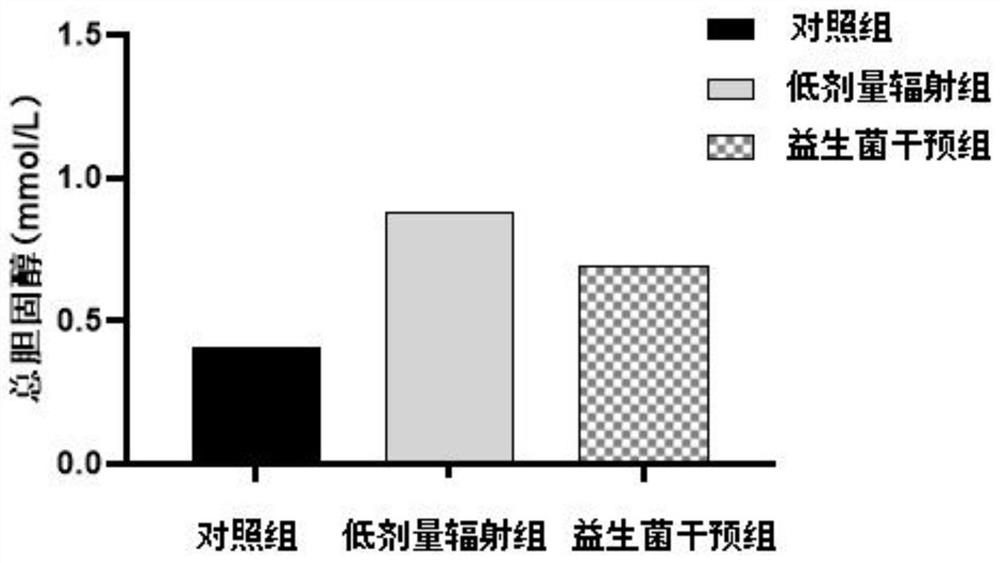Complex microbial inoculant for relieving insulin resistance caused by long-term low-dose radiation exposure and application thereof
A compound bacterial agent and radiation exposure technology, applied in the field of biomedicine, can solve problems such as insulin resistance and persistent blood sugar increase, and achieve the effect of reducing the expression level, increasing the quantity, and reducing the treatment cost.
- Summary
- Abstract
- Description
- Claims
- Application Information
AI Technical Summary
Problems solved by technology
Method used
Image
Examples
Embodiment 1
[0030] The preparation of embodiment 1 composite bacterial agent
[0031] A complex microbial agent for alleviating insulin resistance caused by long-term low-dose radiation exposure, including a probiotic composition and functional substances. The probiotic composition includes Lactobacillus rhamnosus, Lactobacillus reuteri, Bifidobacterium animalis and Bifidobacterium longum. The functional substances include citrulline, glutathione, coenzyme Q10 and seabuckthorn extract.
[0032] The total number of viable bacteria in the probiotic composition is ≥5.0×10 8 CFU / g, wherein the number of live bacteria of a single probiotic in Lactobacillus rhamnosus, Lactobacillus acidophilus, Bifidobacterium animalis and Bifidobacterium longum is ≥8.0×10 7 CFU / g, and the number of live bacteria of a single probiotic in Bifidobacterium animalis and Bifidobacterium longum is ≥3.5×10 7 CFU / g.
[0033] The preparation process of the probiotic composition is:
[0034] 1) Making fermentation m...
Embodiment 2
[0044] Embodiment 2 mouse radiation experiment
[0045] The animal experiments in this example were carried out in accordance with the relevant provisions of the National Regulations on the Administration of Experimental Animals, and were approved by the Experimental Animal Management and Animal Welfare Ethics Committee of the Military Medical College.
[0046] The experimental subjects are C57BL / 6J male mice aged 6-8 weeks, each mouse weighs 20-25g, 30 mice in total, 5 mice per cage. The above 30 mice were divided into a control group, a low-dose radiation group and a probiotic intervention group, with 10 mice in each group.
[0047] For the control group, the mice were fed normally, the animal room was alternated day and night for 12h / 12h, room temperature was 20-24° C., and humidity (40%-60%) was in a negative pressure environment, free to eat and drink.
[0048] For the low-dose radiation group, on the basis of normal feeding, a single 0.05Gy cobalt-60 ray was irradiated ...
PUM
 Login to View More
Login to View More Abstract
Description
Claims
Application Information
 Login to View More
Login to View More - R&D
- Intellectual Property
- Life Sciences
- Materials
- Tech Scout
- Unparalleled Data Quality
- Higher Quality Content
- 60% Fewer Hallucinations
Browse by: Latest US Patents, China's latest patents, Technical Efficacy Thesaurus, Application Domain, Technology Topic, Popular Technical Reports.
© 2025 PatSnap. All rights reserved.Legal|Privacy policy|Modern Slavery Act Transparency Statement|Sitemap|About US| Contact US: help@patsnap.com



